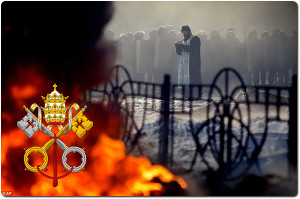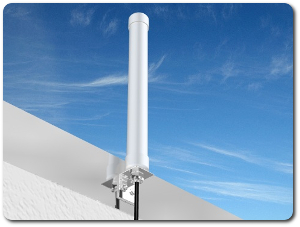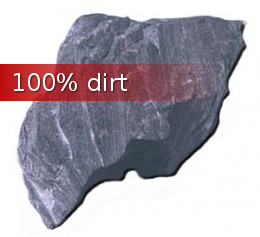Warning – second hand oil and gas smoke will kill you, your children and the environment.
Latest news, World news Sunday, January 9th, 2011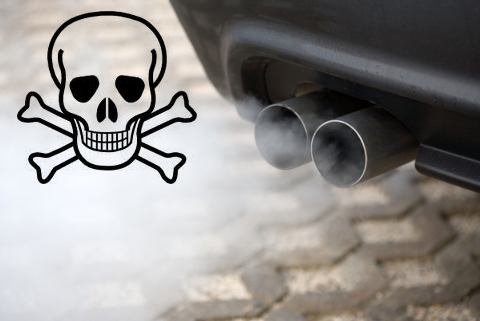
Have you noticed all of the warning about second hand smoke and the effect it has on us, our children and the environment? Our governments have spared no expense in an effort to ban smoking. Smoking is now banned at the workplace, in restaurants and on almost every government and public property. Why all the fuss? The claim is that smoking and second hand smoke is the root cause of most diseases that afflicts us today. The truth is cigarette smoking isn’t the root cause, oil and gas is the main culprit. You see oil and gas contains a hundred times more deadly toxins than cigarettes. Oil and gas is killing us, our children and the environment. Cigarette smoke is harmless when you compare it to the harmful and deadly effects of oil and gas.
A short list of the many pathogens found in car exhaust:
- Carbon Monoxide – Carbon monoxide poisoning has been proven to cause brain damage and death. You can’t see it, smell it, or taste it; but carbon monoxide can kill you.
- Carbon Dioxide – Global warming has been linked to the emission of greenhouse gases . 72% of the totally emitted greenhouse gases is carbon dioxide (CO2), 18% Methane and 9% Nitrous oxide (NOx). Carbon dioxide emissions therefore are the most important cause of global warming.
- Nitrogen dioxide – Long-term exposure to NO2 causes adverse health effects. Nitrogen dioxide inflames the lining of the lungs, and it can reduce immunity to lung infections. This can cause problems such as wheezing, coughing, colds, flu and bronchitis. Increased levels of nitrogen dioxide can have significant impacts on people with asthma because it can cause more frequent and more intense attacks. Children with asthma and older people with heart disease are most at risk.
- Sulphur dioxide – Health effects caused by prolonged exposure to SO2 include breathing problems, respiratory illness, changes in the lung’s defenses, and worsening respiratory and cardiovascular disease. People with asthma or chronic lung or heart disease are the most sensitive to SO2. It also damages trees and crops. SO2, along with nitrogen oxides, are the main precursors of acid rain. This contributes to the acidification of lakes and streams, accelerated corrosion of buildings and reduced visibility. SO2 also causes formation of microscopic acid aerosols, which have serious health implications as well as contributing to climate change.
- Suspended particles, PM-10 particles less than 10 microns in size.
- Benzene- It has been long been established that benzene lowers blood cell counts and causes leukemia. Benzene is a well known human carcinogen, which means it can cause cancer. Benzene exposure mostly causes blood cancer or other blood related health conditions. Benzene causes T-cell death (the definition of ‘AIDS‘). Benzene is the cause of AIDS.
- Formaldehyde – The EPA has concluded that formaldehyde is carcinogenic when inhaled by humans. “There is sufficient evidence of a causal relationship between formaldehyde exposure and cancers of the upper respiratory tracts, with the strongest evidence for nasopharyngeal and sino-nasal cancers,” the 1,043-page draft assessment concludes. “There is also sufficient evidence of a causal association between formaldehyde exposure and lymphohematopoietic cancers, with the strongest evidence of Hodgkin lymphoma and leukemia, particularly myleloid leukemia.“
- Polycyclic hydrocarbons – polycyclic hydrocarbons are known to pathology through their capacity to cause malignant growths – cancer. Long-term health effects caused by exposure to PAHs include cataracts, kidney and liver damage and jaundice. Repeated skin contact with the PAH naphthalene can result in skin redness and irritation. Breathing or swallowing large amounts of naphthalene can cause the breakdown of red blood cells.
With all of these harmful and deadly health effects why are we not banning oil and gas? We are after all exposed to much higher concentrations of car exhaust than cigarette smoke. The greatest possibility for high-level exposures to the harmful effects of oil and gas isn’t inside the workplace, or restaurants or government and public buildings … the majority of people are exposed to automobile exhaust outside. The highest level exposure to these very toxic and deadly pathogens of gas and oil are at gasoline (filling) stations. Why isn’t there warning signs at gas stations? Why are kids not protected by our government from the deadly side effects of gasoline and oil? Our children are required to be strapped in car seats. They are the ones most affected by exposure to car exhaust and fuel vapors at filling stations. They inhale a higher ratio of car exhaust and gas vapor than second hand smoke. They are the ones playing in the smog that is solely created as a by-product of combustion engines. Our government tells us that we should insist that our children go outside and play. They insist that we exposure our children to the toxic and deadly pathogens created by oil and gas emissions. Would you go outside if there was a smog alert? What would you prefer – a blue sky or a yellow sky?
From human evidence and supporting animal studies, the U.S. Department of Health and Human Services has determined that benzene (found in gasoline, oil and most oil based consumer products) is carcinogenic. Leukemia and subsequent death from cancer have occurred in some workers exposed to benzene for periods of less than 5 and up to 30 years. Long-term exposures to benzene may affect normal blood production, leading to anemia and internal bleeding. In addition, human and animal studies indicate that benzene is harmful to the immune system, increasing the chance for infections and perhaps lowering the body’s defense against tumors. Exposure to benzene has also been linked with genetic mutations in humans and animals. Animal studies indicate that benzene has adverse effects on unborn animals. These effects include low birth weight, delayed bone formation, and bone marrow damage. Some of these effects occur at benzene levels as low as 10 parts of benzene per million parts of air.
Polycyclic aromatic hydrocarbons (PAHs) are a group of toxic chemicals that are formed during the incomplete burning of coal, oil and gas, garbage, or other organic substances. As there are now millions of cars and trucks on our roads today, they are the major source of PAHs. The automotive exhaust is proof that every car and truck on the road today doesn’t completely burn the gasoline or diesel, thereby emitting PAHs. Zero-emission doesn’t exist in any of the combustion engine cars, trucks, buses, boats, aircraft, trains, motorcycles, ATVs and generators. Until that day comes there will always be exposure to high levels of the toxic Polycyclic aromatic hydrocarbons.
The U.S. Department of Health and Human Services has determined that PAHs is carcinogenic. Several of the PAHs, including benzanthracene, benzopyrene, benzofluoranthene, benzofluoranthene, chrysene, dibenzanthracene, indenopyrene have caused tumors in laboratory animals when they ate them, when they were applied to their skin and when they breathed them in the air for long periods of time. Reports in humans show that individuals exposed by breathing or skin contact for long periods of time to mixtures of other compounds and PAHs can also develop cancer. Studies in animals have also shown that PAHs can cause harmful effects on skin, body fluids, and the body’s system for fighting disease after both short- and long-term exposure.
The CO2 Emissions (mass of CO2 produced) for gasoline is 19.6 lb/US gal (2.35 kg/L). For diesel fuel it is 22.4 lb/US gal (2.68 kg/L). Jet fuel produces 22.1 lb/US gal (2.65 kg/L). In the United States, something like 178 million gallons of gasoline is consumed every day. That means 3.488 billion lbs of CO2 Emissions is produced each and every day. 30 Cigarettes produces .4 grams/hour (0.8 grams/pack) of emissions. Out of the total North American population 30% of them are smokers. According to the United States Federal Highway Administration, in 2004, there were 199 million registered drivers and 237 million registered cars. In 2004 the population of the United States was 292 million.
Now that you know the facts which product do you think should be banned – cigarette smoking, which emits very small “puffs” of toxins or gasoline and oil that emits tons of toxins. Remember that pollution is measured by the ton. Worldwide, 27 billion tonnes of carbon dioxide are produced by gasoline and diesel combustion engines. Our forests, the Earth’s lungs, can easily filter and clean cigarette smoke air. It can’t, however, keep up with the huge amounts of toxic and deadly smog created by oil and gas.
Short URL: https://presscore.ca/news/?p=907

 The Halifax International Security Forum was founded in 2009 as a propaganda program within the German Marshall Fund (founded June 5, 1972 by West German Chancellor Willy Brandt) by the Crown in Canada using Crown Corp ACOA & DND funds. The Halifax International Security Forum is a front that is used to recruit top US, UK and Canadian gov and military officials as double agents for Canada's WWI, WWII enemy and wage new Vatican Germany Cold War.
High Treason: s.46 (1) Every one commits high treason who, in Canada (c) assists an enemy at war with Canada, ..., whether or not a state of war exists". Every one who, in Canada assists Canada's enemies wage "piecemeal WWIII" Cold War by organizing, funding and participating in the Germany government politically and militarily benefitting / lead Halifax International Security Forum is committing high treason.
The Halifax International Security Forum was founded in 2009 as a propaganda program within the German Marshall Fund (founded June 5, 1972 by West German Chancellor Willy Brandt) by the Crown in Canada using Crown Corp ACOA & DND funds. The Halifax International Security Forum is a front that is used to recruit top US, UK and Canadian gov and military officials as double agents for Canada's WWI, WWII enemy and wage new Vatican Germany Cold War.
High Treason: s.46 (1) Every one commits high treason who, in Canada (c) assists an enemy at war with Canada, ..., whether or not a state of war exists". Every one who, in Canada assists Canada's enemies wage "piecemeal WWIII" Cold War by organizing, funding and participating in the Germany government politically and militarily benefitting / lead Halifax International Security Forum is committing high treason.
 Please take a moment to sign a petition to
Please take a moment to sign a petition to 


































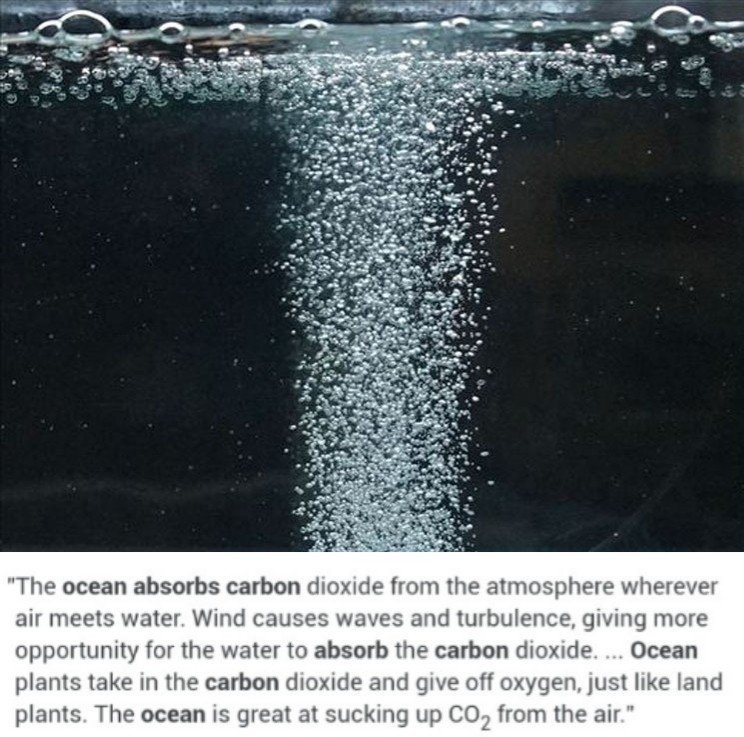






 1917 Code of Canon Law, Canon 185 invalidates (voids) all papacies since October 26, 1958 due to the fact Cardinal Giuseppe Siri was elected Pope on the Third ballot on Oct 26 1958 but the new Pope Gregory XVII was illegally prevented from assuming the office. A Pope was elected on October 26, 1958. Thousands of people witnessed a new Pope being elected by seeing white smoke and millions were informed by Vatican radio broadcasts beginning at 6:00 PM Rome time on October 26, 1958. The papacy of Francis, Benedict, John Paul II, John Paul I, Paul VI, John XXIII and any and all of their respective doctrines, bulls, letter patents and the Second Vatican Council are all invalidated (having no force, binding power, or validity) by Canon 185 because the 1958 conclave of cardinals elected Cardinal Giuseppe Siri Pope on Oct 26 1958. Cardinal Giuseppe Siri accepted the papacy by taking the name Pope Gregory XVII but was illegally prevented from assuming his elected office.. According to Canon 185 Cardinal Angelo Giuseppe Roncalli illegally assumed the papacy 2 days later by fraud and grave fear, unjustly inflicted against Cardinal Giuseppe Siri who was lawfully elected Pope Gregory XVII. Because no Pope has been lawfully elected since October 26, 1958 the Holy See (la Santa Sede/Seat) remains vacant.
1917 Code of Canon Law, Canon 185 invalidates (voids) all papacies since October 26, 1958 due to the fact Cardinal Giuseppe Siri was elected Pope on the Third ballot on Oct 26 1958 but the new Pope Gregory XVII was illegally prevented from assuming the office. A Pope was elected on October 26, 1958. Thousands of people witnessed a new Pope being elected by seeing white smoke and millions were informed by Vatican radio broadcasts beginning at 6:00 PM Rome time on October 26, 1958. The papacy of Francis, Benedict, John Paul II, John Paul I, Paul VI, John XXIII and any and all of their respective doctrines, bulls, letter patents and the Second Vatican Council are all invalidated (having no force, binding power, or validity) by Canon 185 because the 1958 conclave of cardinals elected Cardinal Giuseppe Siri Pope on Oct 26 1958. Cardinal Giuseppe Siri accepted the papacy by taking the name Pope Gregory XVII but was illegally prevented from assuming his elected office.. According to Canon 185 Cardinal Angelo Giuseppe Roncalli illegally assumed the papacy 2 days later by fraud and grave fear, unjustly inflicted against Cardinal Giuseppe Siri who was lawfully elected Pope Gregory XVII. Because no Pope has been lawfully elected since October 26, 1958 the Holy See (la Santa Sede/Seat) remains vacant.
 Hold the Crown (alias for temporal authority of the reigning Pope), the Crown appointed Governor General of Canada David Lloyd Johnston, the Crown's Prime Minister (servant) Stephen Joseph Harper, the Crown's Minister of Justice and Attorney General Peter Gordon MacKay and the Crown's traitorous military RCMP force, accountable for their crimes of treason and high treason against Canada and acts preparatory thereto. The indictment charges that they, on and thereafter the 22nd day of October in the year 2014, at Parliament in the City of Ottawa in the Region of Ontario did, use force and violence, via the staged false flag Exercise Determined Dragon 14, for the purpose of overthrowing and besieging the government of Canada contrary to Section 46 of the Criminal Code. In a society governed by the rule of law, the government and its officials and agents are subject to and held accountable under the law. Sign the online
Hold the Crown (alias for temporal authority of the reigning Pope), the Crown appointed Governor General of Canada David Lloyd Johnston, the Crown's Prime Minister (servant) Stephen Joseph Harper, the Crown's Minister of Justice and Attorney General Peter Gordon MacKay and the Crown's traitorous military RCMP force, accountable for their crimes of treason and high treason against Canada and acts preparatory thereto. The indictment charges that they, on and thereafter the 22nd day of October in the year 2014, at Parliament in the City of Ottawa in the Region of Ontario did, use force and violence, via the staged false flag Exercise Determined Dragon 14, for the purpose of overthrowing and besieging the government of Canada contrary to Section 46 of the Criminal Code. In a society governed by the rule of law, the government and its officials and agents are subject to and held accountable under the law. Sign the online  Two of the most obvious signs of a dictatorship in Canada is traitorous Stephen Harper flying around in a "military aircraft" and using Canadian Special Forces "military" personnel from JTF2 and personnel from the Crown's traitorous martial law "military" RCMP force as his personal bodyguards.
Two of the most obvious signs of a dictatorship in Canada is traitorous Stephen Harper flying around in a "military aircraft" and using Canadian Special Forces "military" personnel from JTF2 and personnel from the Crown's traitorous martial law "military" RCMP force as his personal bodyguards.

